When gardens produce abundance, they create habitat for other living things. Plants, animals, insects and fungi interact with each other to create ecosystems.
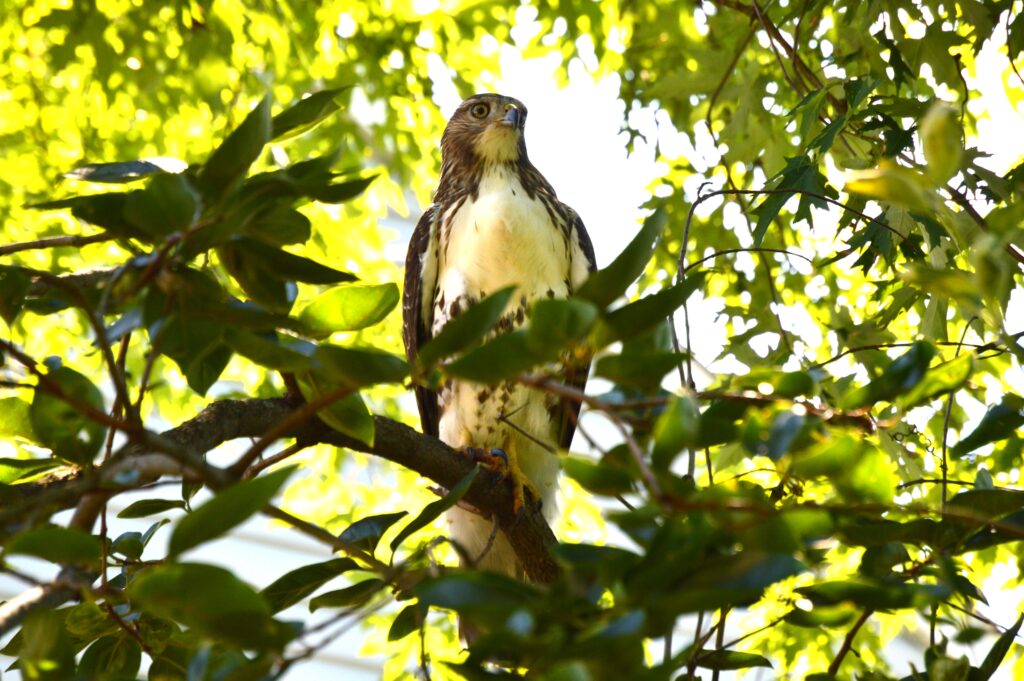
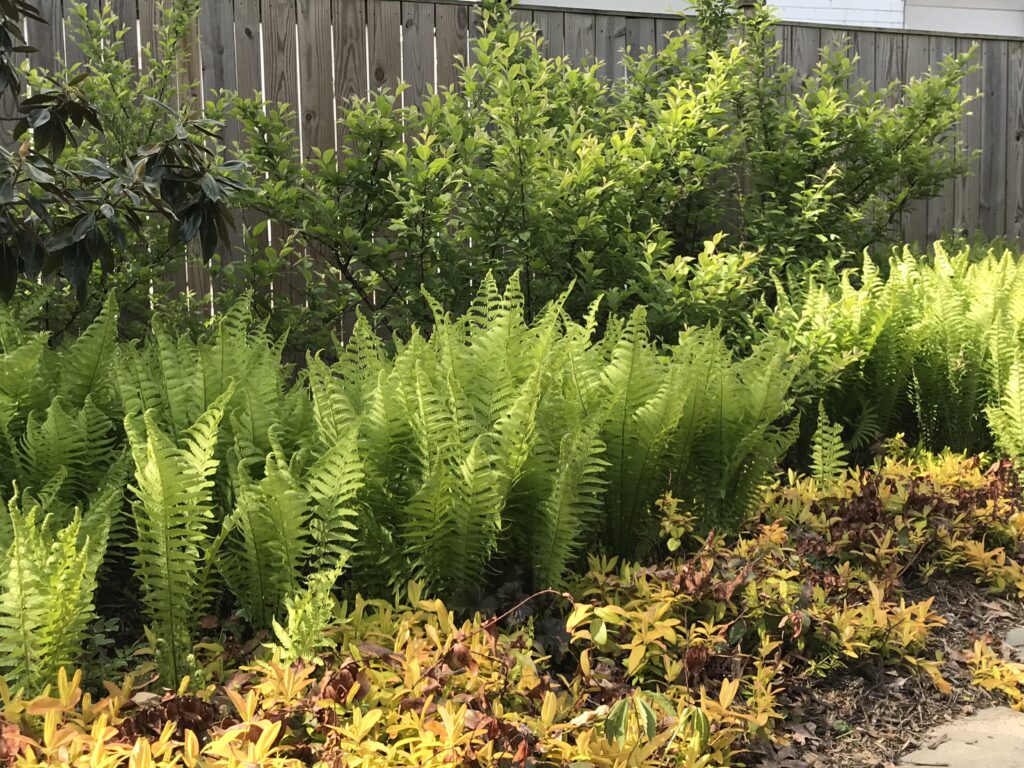
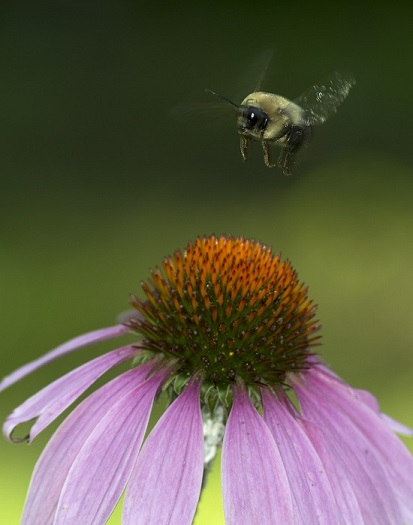
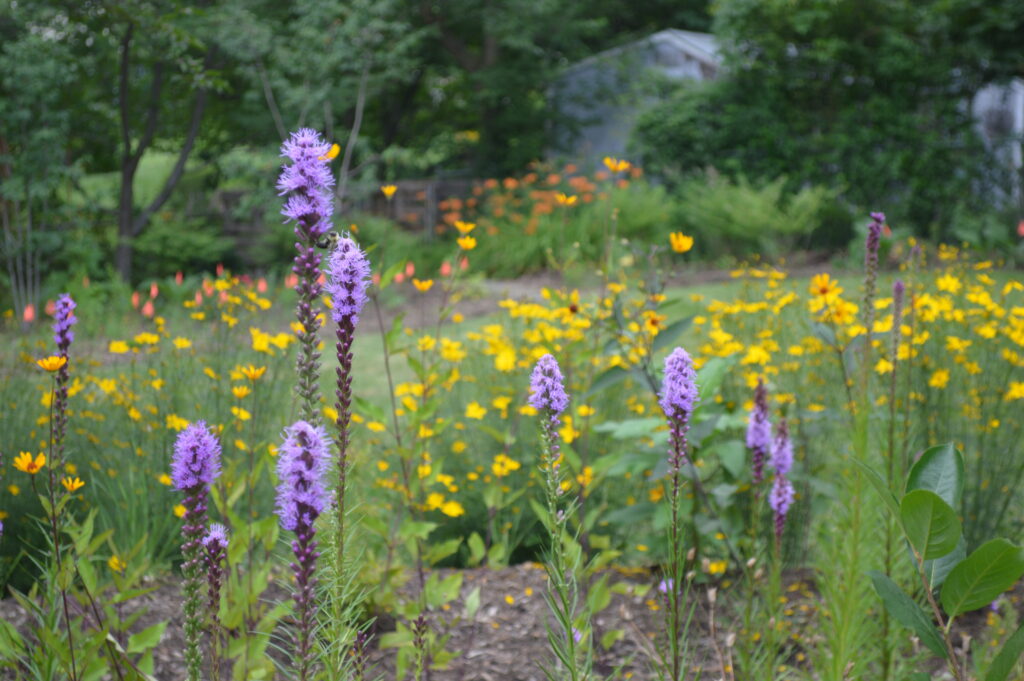
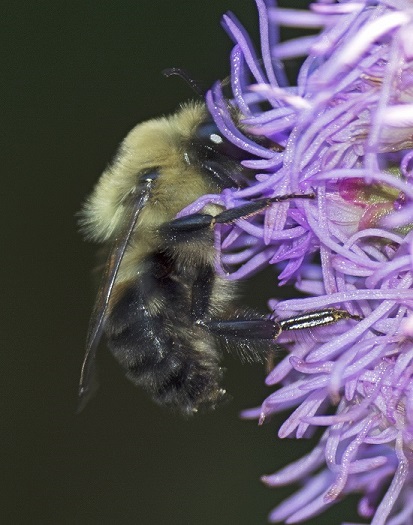
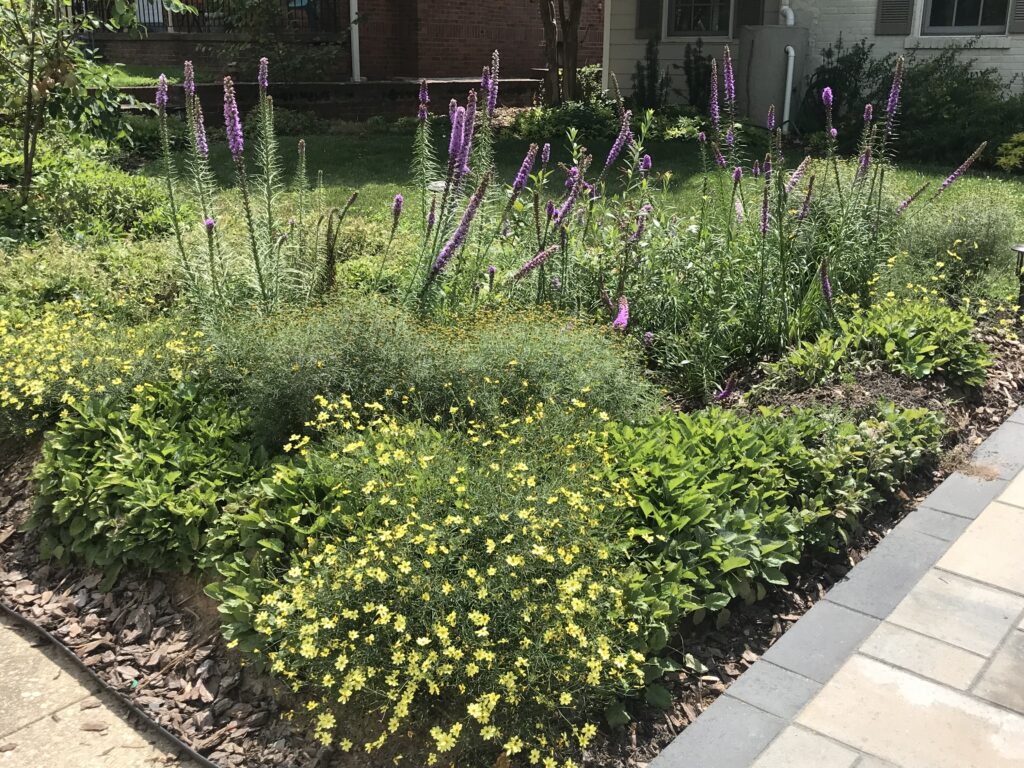
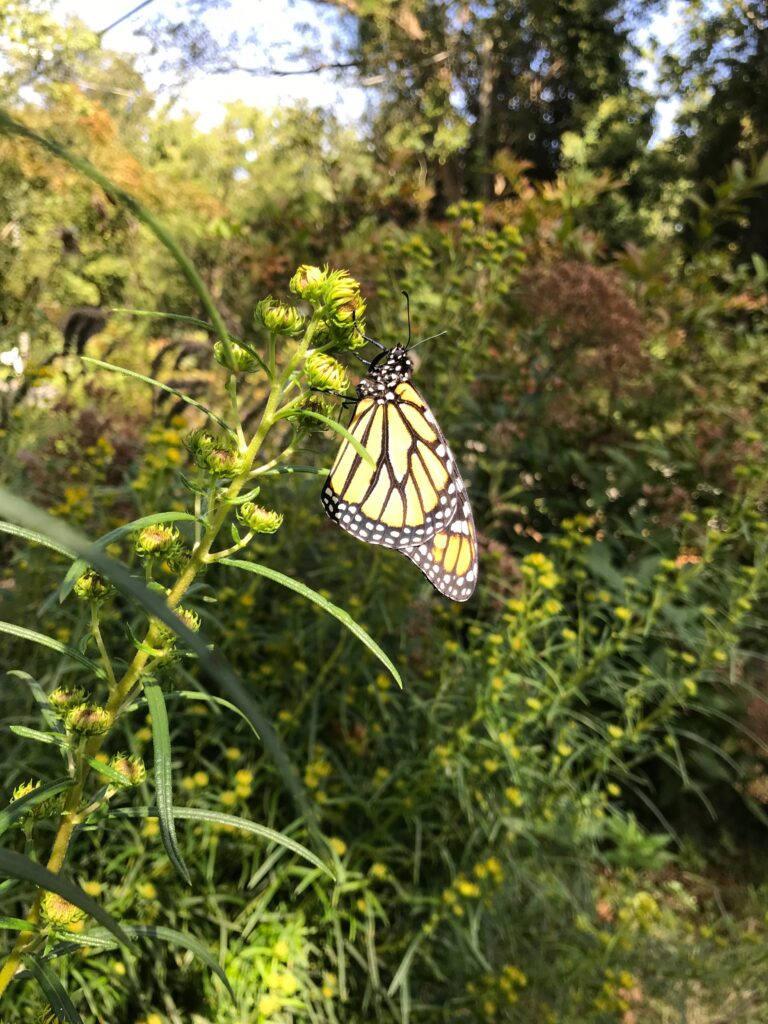
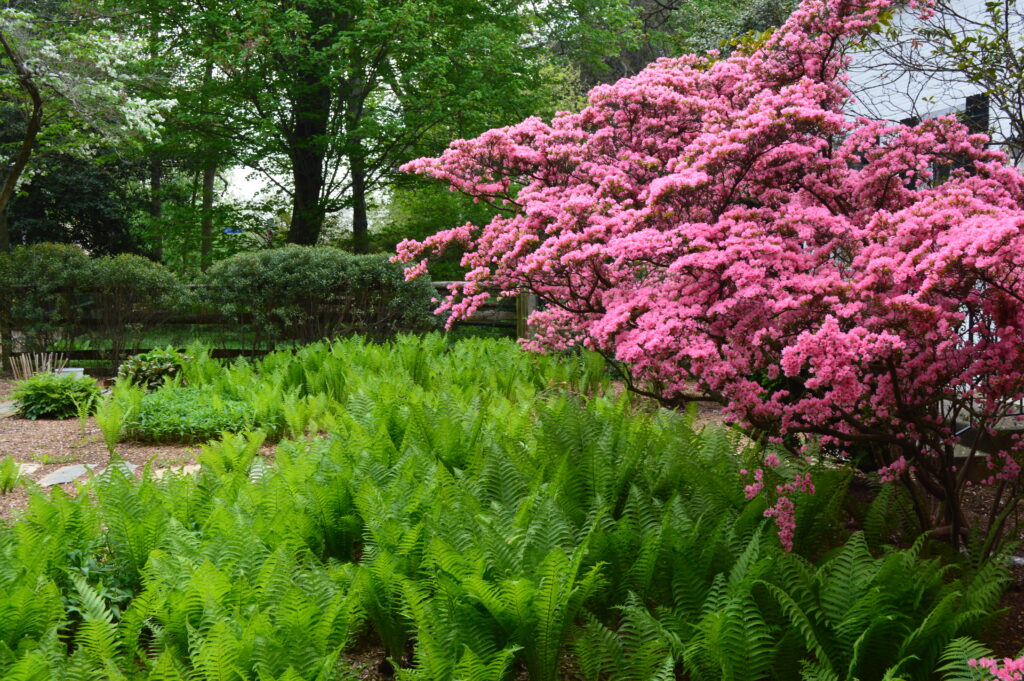
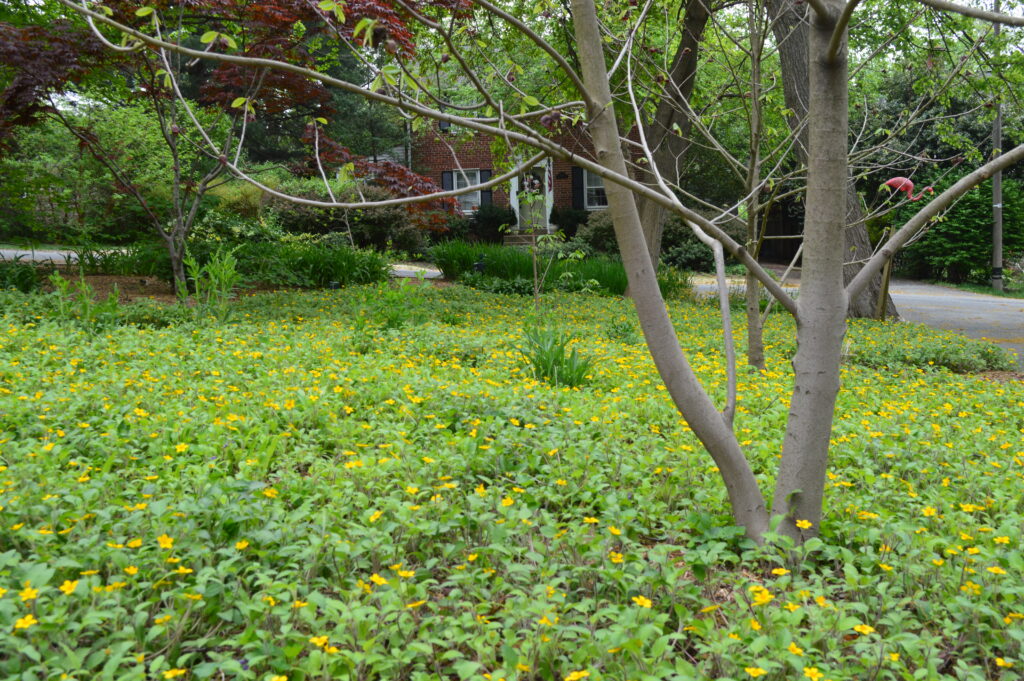
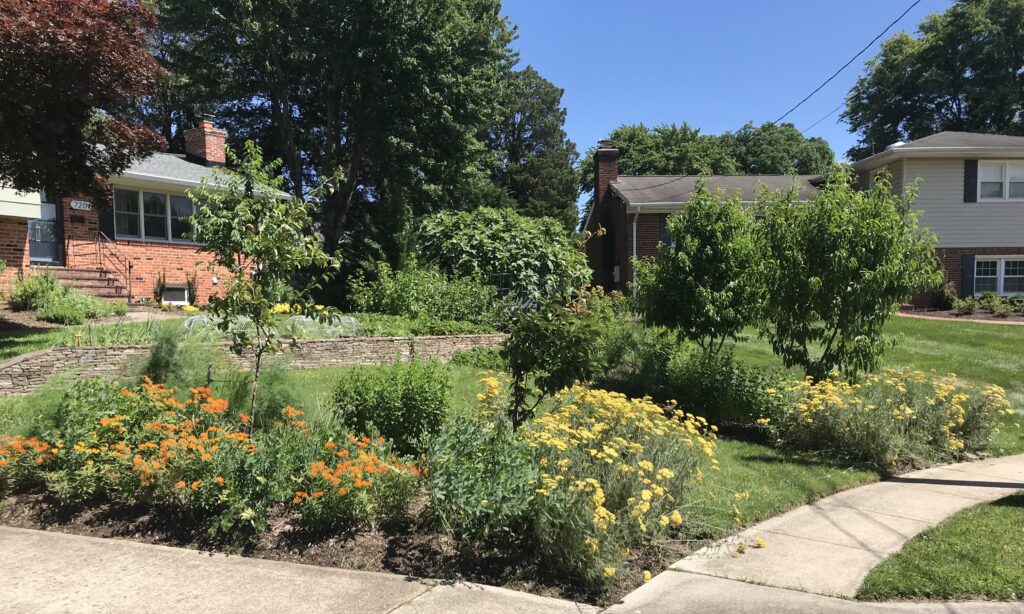
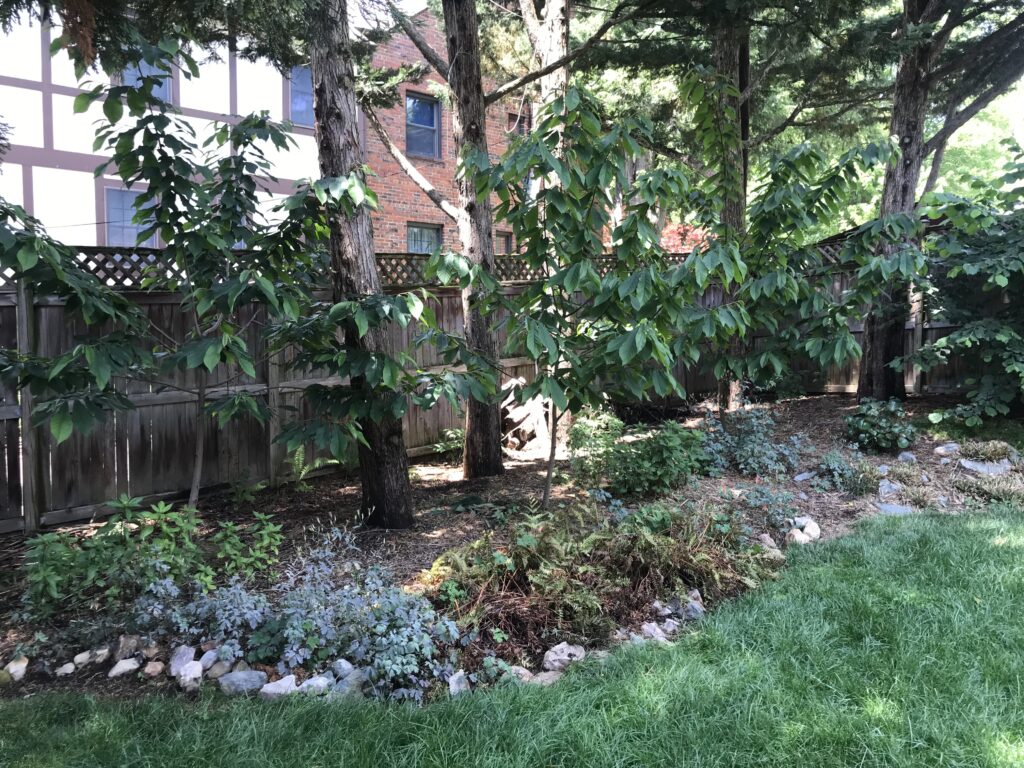
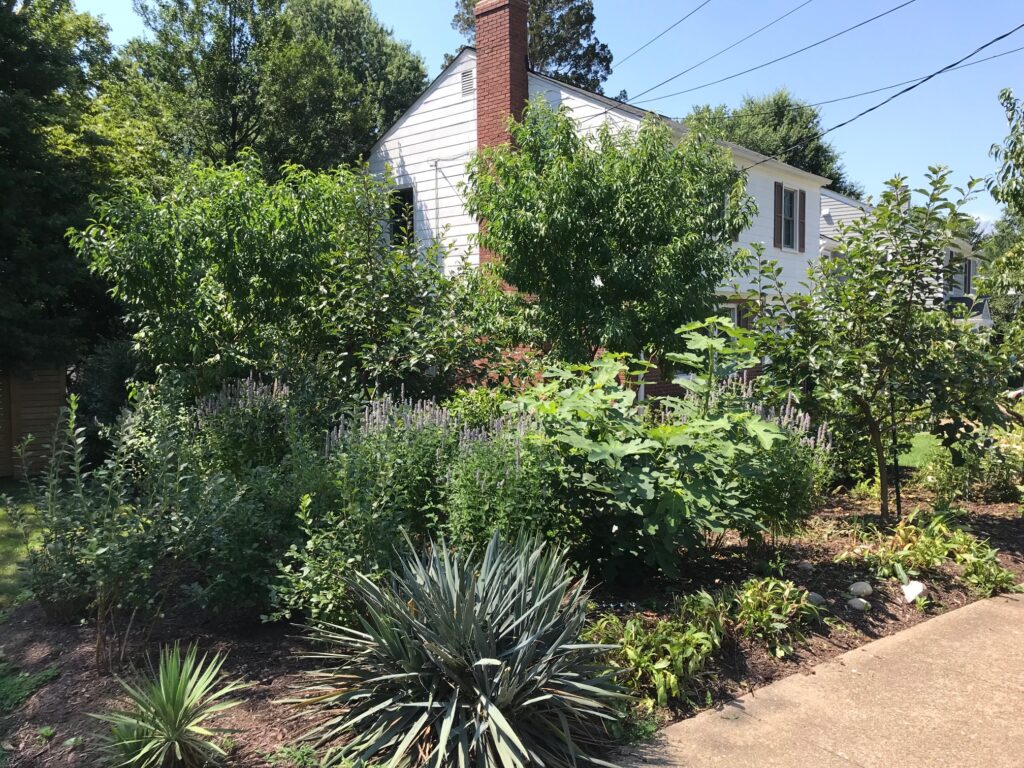
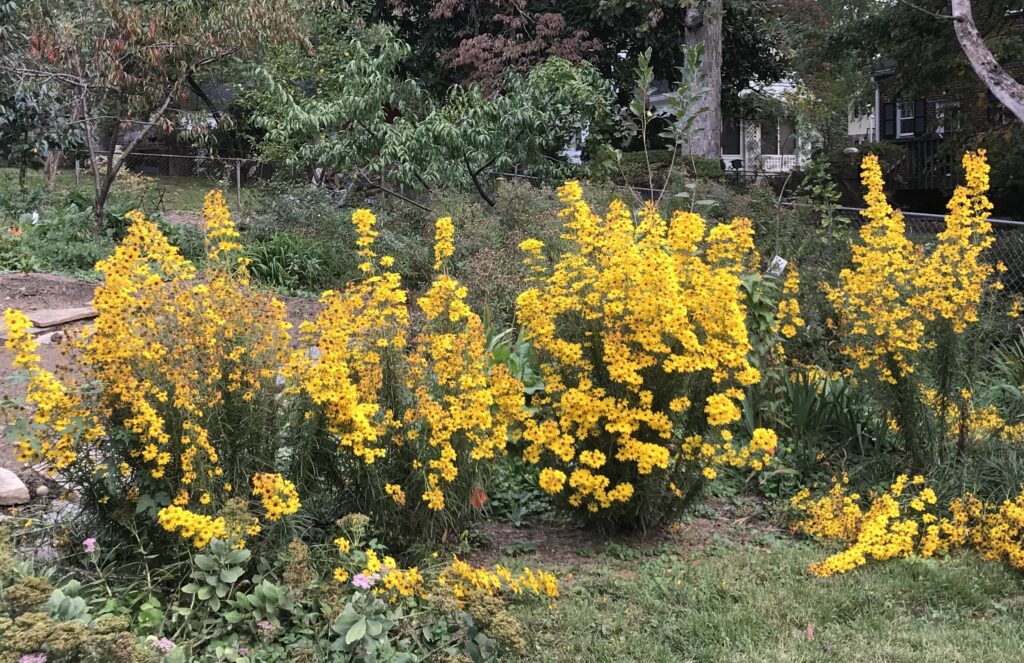

When gardens produce abundance, they create habitat for other living things. Plants, animals, insects and fungi interact with each other to create ecosystems.













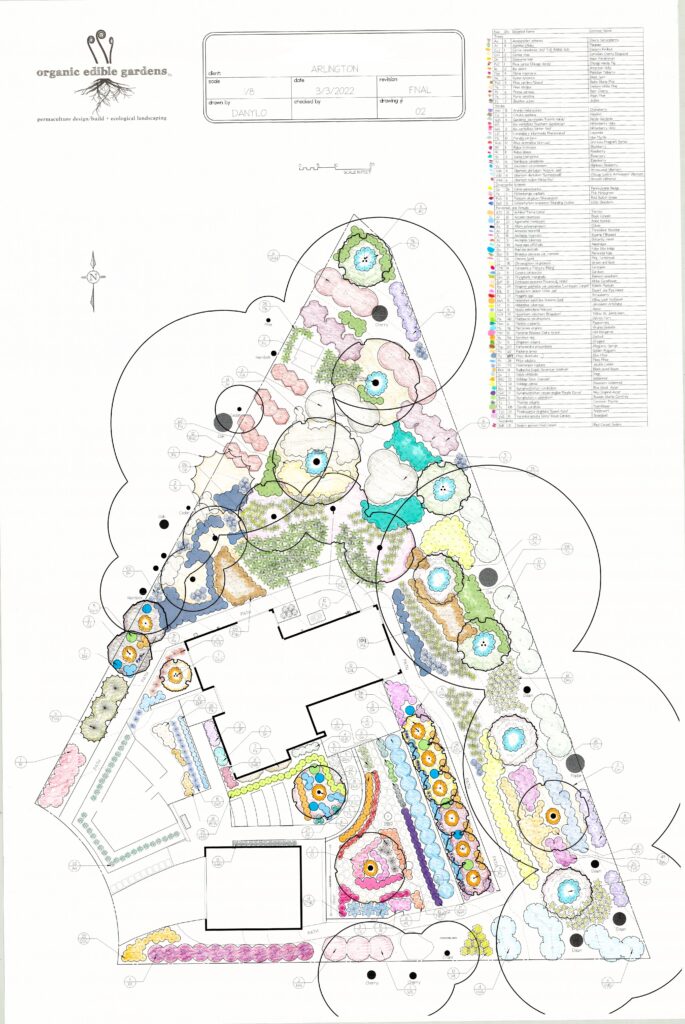
What no lawn? Yes! This landscape design for a client in Arlington is full of native and edible plants instead of a lawn!
The front contains a large vegetable garden surrounded by two layers of 4′ deer fencing with asparagus in between and native meadow plants as a backdrop.
Flagstone steps take you to a terraced plateau filled with Asian pears, blueberries, persimmons, sour cherries, cornelian dogwoods, a fig and a plethora of native flowers that attract beneficial insects.
The shady back slope is held together by serviceberries, paw paws, hazelnuts, elderberries, fragrant sumac and various native ground covers and spreading perennials.
Viburnums, wax myrtles, and a few hollies surround the property to provide privacy and bird habitat.
A couple of black gum trees (Nyssa sylvatica) provide shade for an open forest floor of edible ostrich fern and other woodland natives.
The rear of the property is a daunting invasive Ailanthus grove on a steep slope. After removing the invasive species, the space gives way to a sunny slope appropriate for a food forest. It is comprised of Paw paw, Asian persimmon, Cherry and Peach. Companion plants include Indigobush, False Blue Indigo, Pink Turtlehead, Butterfly Milkweed and Anise Hyssop.
The front yard is full of edible natives like American Hazelnut, Blueberry, Elderberry and Currant paired with ornamental natives like Dogwood, Redbud, Bayberry, Echinacea, Asters and Virginia Bluebells.
We designed this food forest utilizing the sun exposure in a woodland clearing. In order to stabilize the slope we recommended terracing the slope with logs from the property. The terracing will slow down water flow and prevent erosion while the newly installed plants are getting established.
In order to maximize sun exposure, the larger trees were placed to the north and or downhill of the smaller plants. The woody plant pallet is comprised of low maintenance food bearing trees and shrubs like pawpaw, persimmon, Chinese chestnut, elderberry and blueberry. The herbaceous plants are comprised of soil building plants like comfrey and false blue indigo, insect attracting plants like echinacea and yarrow, woodland medicinals like goldenseal and american gingseng and some edible ferns.
For this design, the client was ready to part with their lawn. In place of it we designed a garden with lots of flowers and food. They have a south facing front yard which is an ideal location for food producing perennial plants and a vegetable garden. The north facing back yard with mature tree canopy is the ideal location for a patio, fire pit, hammock and shade loving plants. The woody plantings are laid out on contour with infiltration swales to catch rain water. The tree species include Asian Persimmon, Sour Cherry, Asian Pear and Pawpaw. The property has a total of 18 Blueberry plants as well as Currants, Elderberry and Aronia. Herbaceous plants include Strawberry, Asparagus, Culinary herbs, dynamic accumulators, nitrogen fixers and numerous beneficial insect attracting plants.
By Danylo Kosovych and Organic Edible Gardens LLC
When it comes to rainwater collection the first thing people think about are rain barrels but you don’t need a barrel to collect rain water. Rain barrels are useful if you want to store water and use it for irrigation but for storm water management they are dwarfed by amount of rainfall that falls in the average storm. Once inch of rain falling over a 1000 square foot roof produces 600 gallons of water. A 50 gallon rain barrel only catches 1/12 of the water. A 600 gallon water tank is not only large and obtrusive but also expensive.
Not to worry, rainwater collection can be achieved in multiple ways without using a container at all. Below are examples of multiple ways we have collected rainwater using the earth as the container.
You can catch rain water in a swale:
A swale is a depression in the earth, dug on contour and linear in shape, therefore adept at catching runoff. This client had runoff problems from their neighbor. We created a swale along the property line to catch and infiltrate the runoff before it entered their property. The Elderberries and Aronia benefit from the additional water.
You can catch rain water in a rain garden:
A rain garden is a bowl shaped depression that works well to catch stormwater from a downspout. We later planted this one with Aronia, Low- Bush Blueberries and native perennial flowers. The soil in the center is deeply tilled and the water infiltrates rapidly, while the plants benefit from the additional water.
Or you can use perforated pipe to leach rain water into the soil:
This is a vegetable garden which we created on contour and directed the roof runoff into a perforated pipe and buried the pipe in gravel. All of the water from the roof infiltrates into the soil and waters the vegetable beds.
Here we used the same principal with the infiltration pipe but planted columnar apple trees on top of the pipe. Now the water from the roof irrigates the apple trees.
Copyright 2014 Organic Edible Gardens LLC
Edible Landscape in Sun and Shade
An edible and medicinal understory and pond designed for a shady back yard full of mature hardwoods. A small sunny patch in the front gave way to edible ground covers, perennials, berries and fruit trees. The front downspouts are piped into two rain gardens, one in the shade the other in the sun. The rain garden in the shade is full of moisture loving woodland medicinals, while the rain garden in the sun contains native insect attracting perennial flowers. Species include: Pawpaw, Fig, Peach, Aronia, Spicebush, Clove Currant, Elderberry, Blueberry, Yarrow, Anise Hyssop, Wild Ginger, Asparagus, Black Cohosh, Strawberry, Goldenseal, Ostrich Fern, American Lotus, May Apple, Giant Solomon’s Seal among multiple other soil building, insectary, and native plants.
In case you missed our talk at the George Mason University Permaculture Design Course (or just want a copy of the presentation), here is the full PowerPoint presentation in PDF format – this includes both Danylo’s talk on the business and Jon’s presentation on plant guilds and polycultures.
Download: OEG-GMU PDC Presentation (PDF, 17.0MB)
Thanks again to Danielle Wyman and the Mason Sustainability Institute for inviting us to speak!
PDC 2014 Community Spotlight Discussion
Join this year’s Permaculture Design Certification class as they welcome Jonathan Storvick and Danylo Kosovych of Organic Edible Gardens for an exclusive event open to the community. Organic Edible Gardens LLC is a Permaculture-based business working on the ground in our nation’s capital region and striving to make a positive impact on our cultural and environmental ecosystems.
What: The Organic Edible Gardens team will present the details of their initial formation and subsequent adaptation in order to succeed as a business in tough economic climates and fill a niche in the competitive landscape industry. Examples will be shown of current gardening practices and services as well as their direct effects upon the physical and social landscapes. They will discuss design methodology, ecosystem dynamics, plant guilds appropriate to the Mid-Atlantic region, and elements of design for creating resilient and sustainable perennial polycultures.
When: Tuesday, March 11th
Where: University Hall room 1200
Who: Mason and non-Mason community members welcome
Jonathan Storvick is a horticulturist and landscape designer with Organic Edible Gardens LLC in Arlington, VA. He earned his Permaculture Design Certificate in 2009 and has studied with Edible Forest Gardens authors Dave Jacke and Eric Toensmeier. He has contributed literature survey research to a forthcoming book on coppice agroforestry, and is currently developing a permaculture homestead and nursery business.
Danylo Kosovych is the owner of Organic Edible Gardens LLC. He has a M.A. in Anthropology from George Mason University. His thesis focused on western participation in Amazonian plant based medicine. He earned his Permaculture Design Certificate from Wayne Weisman of The Permaculture Project. Danylo is a NOFA Accredited Organic Land Care Professional.
*Contact Danielle at dwyman@gmu.edu for more details or to RSVP*